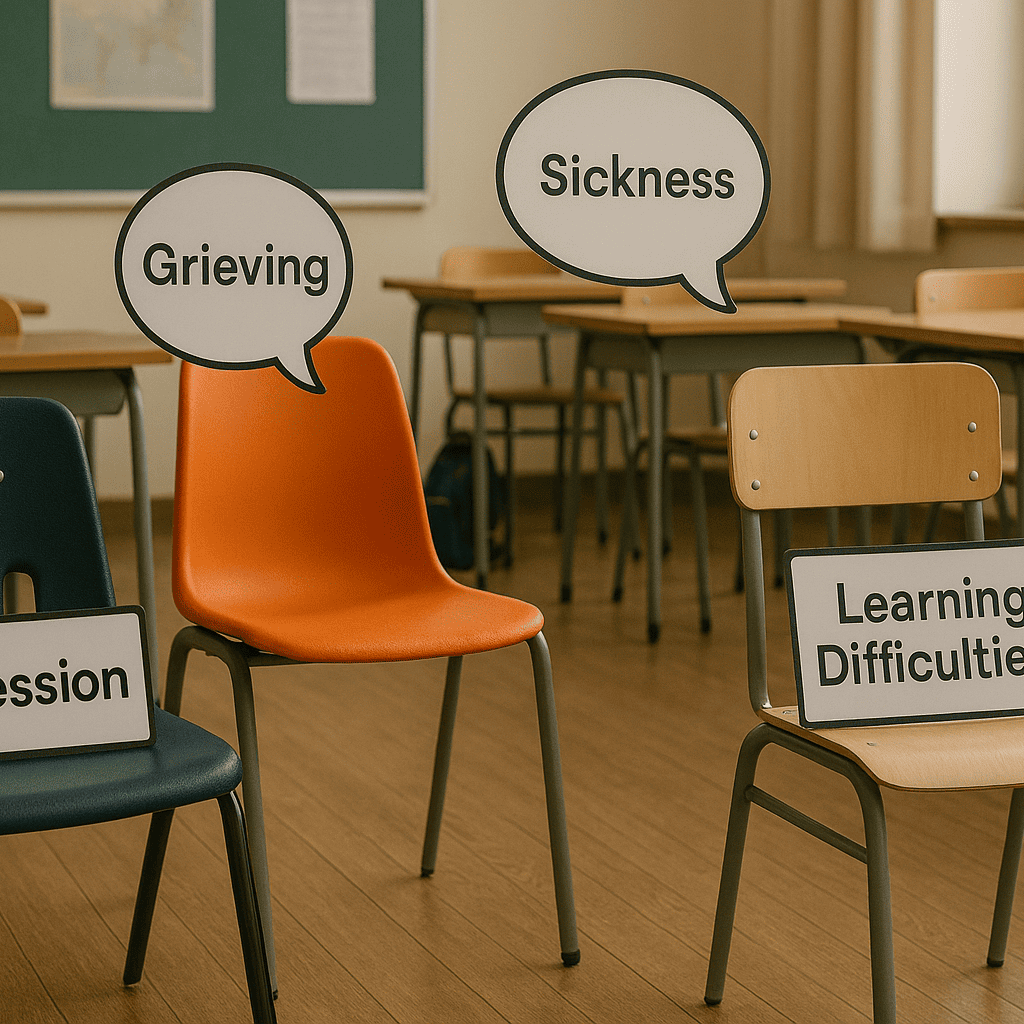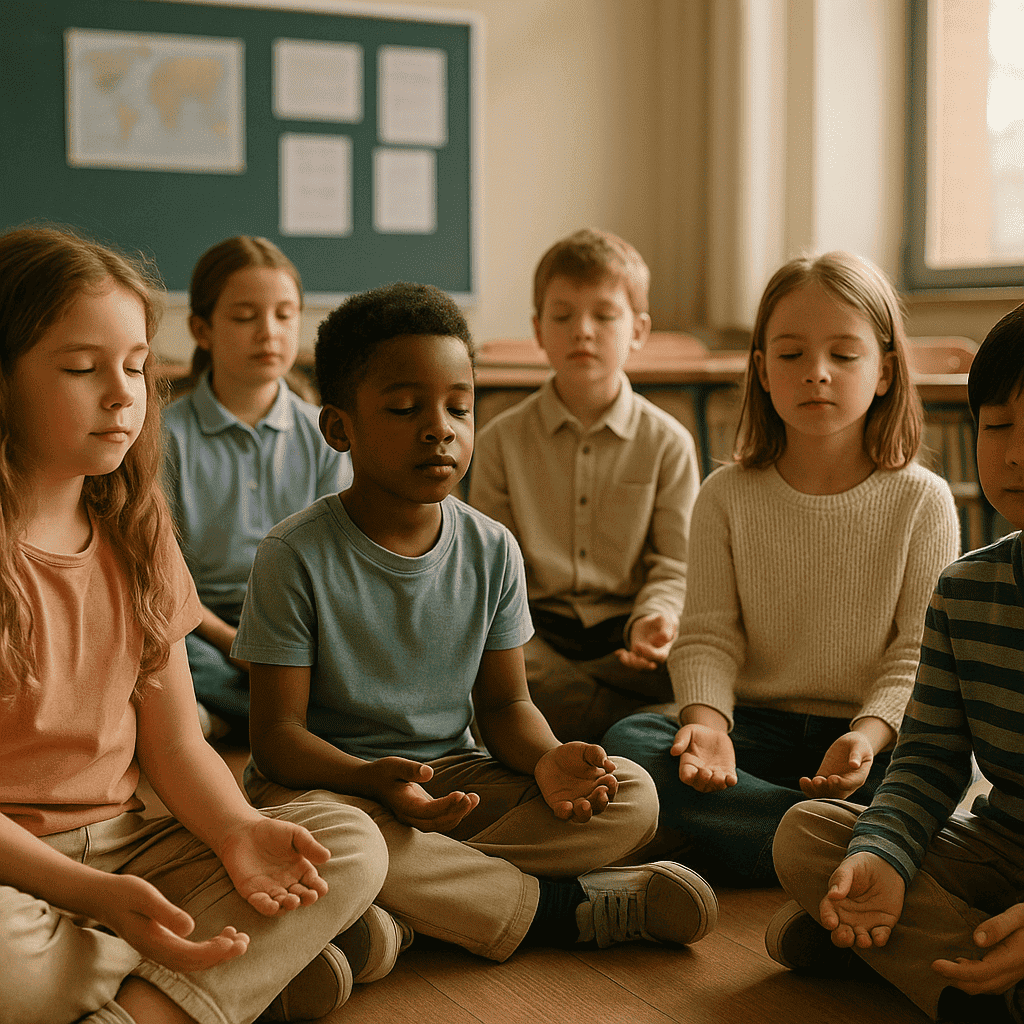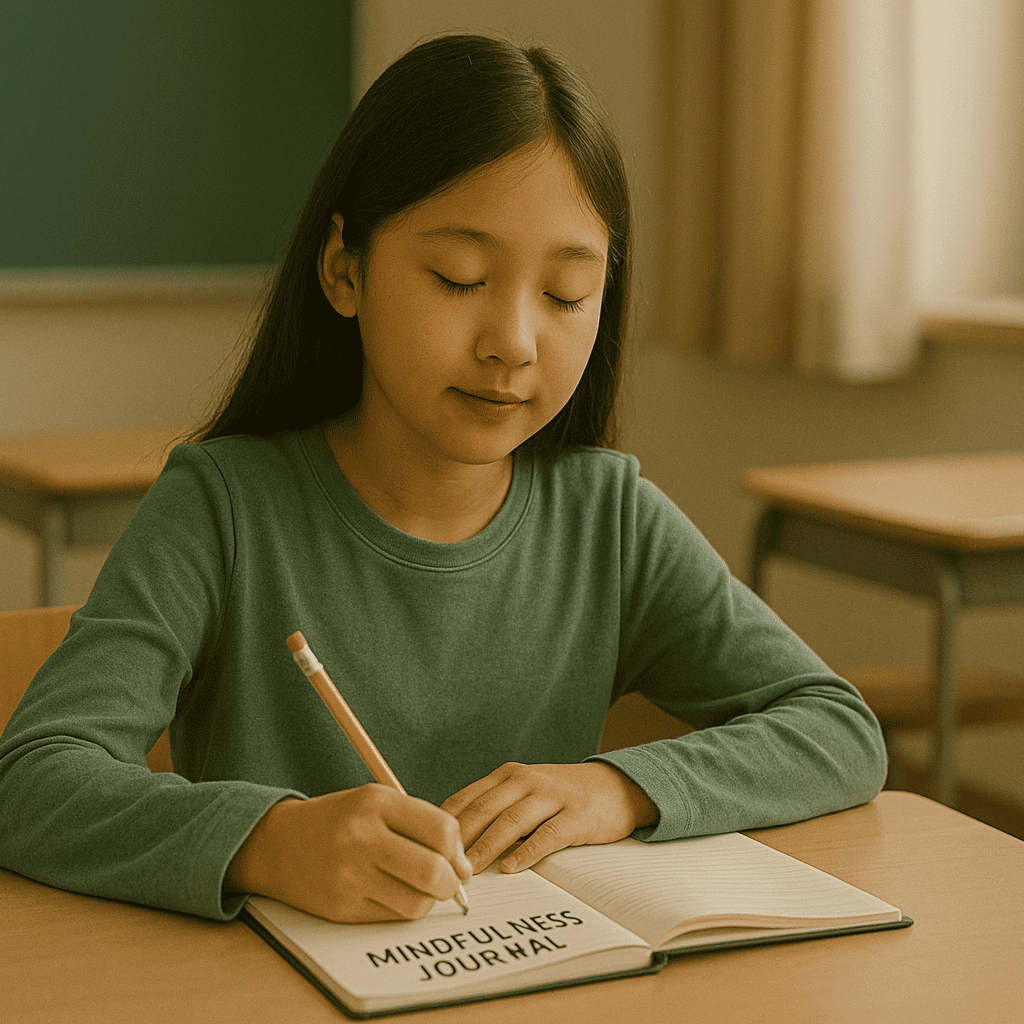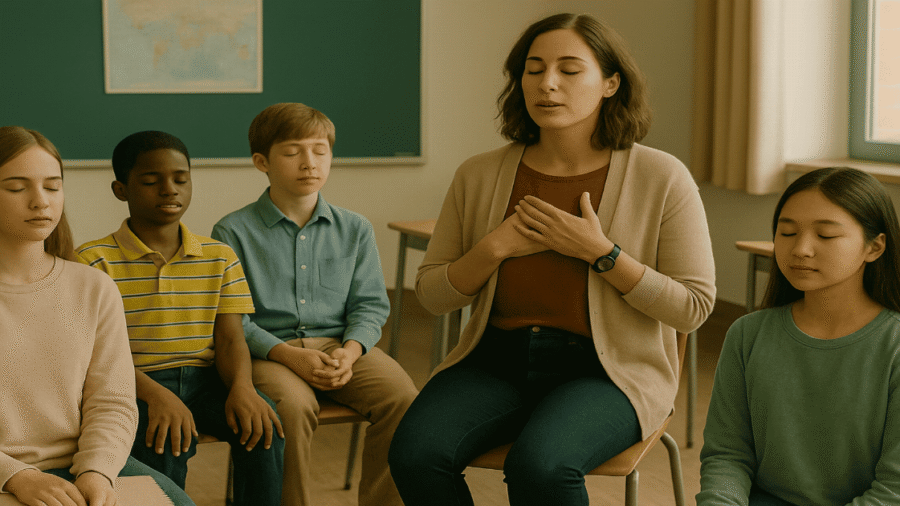Imagine a classroom where students do not just memorise facts, but truly show up fully present, emotionally grounded, and mentally open. In a world increasingly filled with distractions and stress, most kids come to school with hidden emotional burdens. Anxiety, peer pressure, overstimulation, and fear of failure become constant companions, making learning feel like a struggle rather than a joy.
But what if we could interrupt that pattern?
Mindfulness in the classroom offers just a pause, a breath, and a pathway to emotional regulation, focus, and resilience. It is not a trend, but a science-backed practice that empowers students and teachers alike to reset the emotional climate of learning.
What Is Mindfulness in the Classroom?
Mindfulness in the classroom refers to short, structured exercises like deep breathing, guided imagery, or body scans introduced into the school day to allow students to ground their minds and regulate their emotions.
According to the Centers for Disease Control and Prevention, even five-minute daily mindfulness moments can significantly reduce anxiety and improve mental well-being among students, particularly those in high-pressure or underserved school environments.
Why Mindfulness Matters More Than Ever

Today’s students face more psychological stress than previous generations. Academic demands, social media, and post-pandemic stress have created a perfect storm for mental strain. Research from the New Jersey Department of Education shows that mindfulness does not only reduce stress but also enhances student-teacher relationships and boosts classroom harmony.
These benefits are not just anecdotal. A 2023 PubMed Central review found that school-based mindfulness programmes led to significant reductions in symptoms of depression, anxiety, and emotional dysregulation.
Core Benefits of Mindfulness in the Classroom
1. Improved Focus and Attention

Students trained in mindfulness exhibit measurable improvements in attention span and executive functioning. A study found that children who practiced mindfulness three times a week demonstrated enhanced working memory and better task completion. Source
2. Reduced Anxiety and Stress Levels
Mindfulness helps break the cycle of anxious thoughts. In the article, The Silent Struggle of High-Functioning Anxiety, you will learn how anxiety can live behind academic success. Mindfulness gives students permission to slow down and tend to their emotional needs without shame.
3. Greater Emotional Regulation
Emotions can overwhelm young learners. Mindfulness teaches them how to recognise, name, and navigate their emotions. This self-awareness leads to fewer outbursts and more respectful peer interactions.
As highlighted in Calming Techniques for Anxious Children, mindfulness can become a daily coping tool, especially for children dealing with persistent worry or sensory overload.
4. Better Academic Performance
Mindfulness is not a distraction from learning, it rather a tool that enhances it. A study conducted also found that students who participated in a mindfulness-based school interventions reported better concentration and significantly improved test performance in literacy and numeracy. Source
5. Enhanced Teacher Well-Being
It is not just students who benefit. Teachers practicing mindfulness report less burnout, better classroom management, and more patience. When teachers When teachers embody calm and regulation, students do the same. A mindful teacher creates a mindful classroom.
How to Integrate Mindfulness in the Classroom
Mindfulness does not have to be accompanied by expensive programmes. Small but regular practices have the greatest effect.
Here are practical ways to begin:
- Start the Day with Breathwork – Have students close their eyes and slowly breathe together for some few minutes.
- Use “Mindful Minutes” During Transitions – Before switching topics, allow 60 seconds of quiet and deep breathing time.
- Create a Mindfulness Corner – Designate a calming space with visuals, sensory tools, and quiet prompts.
- End with Gratitude Journals – Have students write one thing they are thankful for at the end of the day.
These practices, when used with intention, shift the culture of a classroom from reactive to reflective.

Supporting Mental Health at Every Age
In the post, “The Rising Epidemic of Anxiety Disorders in Teens”, the urgency of early mental health intervention is clear. Mindfulness offers a bridge and a simple, free, and inclusive way to help children and adolescents develop the tools they need to survive and thrive in school and beyond.
A 2023 CDC guide affirms that integrating social-emotional learning with daily mindfulness helps build resilience, empathy, and readiness to learn.
A Breath of Change
Mindfulness in the classroom is as a compass for emotional growth and not only a coping mechanism. With just a few quiet moments a day, students learn how to face challenges with calm, treat themselves with compassion, and create space between stimulus and response.
At a time when mental health problems are on the increase among young people, choosing mindfulness is not just an educational strategy, it is an act of kindness.



Add a Comment